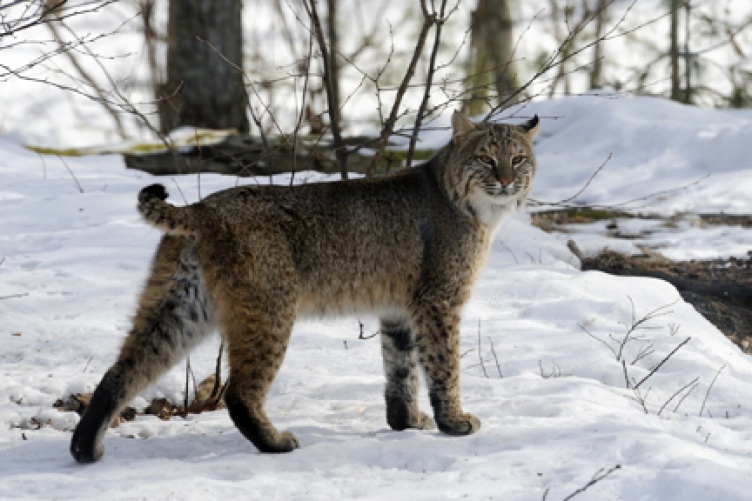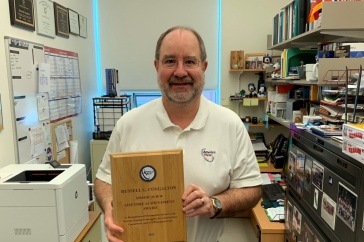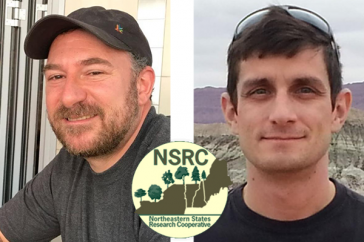
Decades ago, bobcats were commonplace across the Granite State, but their numbers dwindled to near extinction because of land use changes and hunting. Since 1989, they have been protected, and scientists with the NH Agricultural Experiment Station (NHAES) at the University of New Hampshire College of Life Sciences and Agriculture (COLSA), are using DNA analysis to assess the abundance and range of the state’s bobcat population.
“Increased sightings and captures of bobcats in the past 10 years or so suggest that they are becoming more abundant in New Hampshire. The extent of this population increase is not known, but it does seem likely that bobcats have responded to more than 20 years of protection. With an apparent increase, there is renewed interest among many outdoor and wildlife enthusiasts about the influencing factors,” says John Litvaitis, professor of wildlife ecology at UNH and a researcher on the bobcat project.
“Understanding Bobcats in the Granite State” is a collaboration with the New Hampshire Fish and Game Department. Scientists are examining the distribution and abundance of bobcats in the state, identifying what habitat features they rely upon, developing an understanding of how bobcats respond to expanding human populations, and designing a method to monitor changes in bobcat populations.
Now in its fourth year, the bobcat study has moved into the genetics portion of the project, led by Marian Litvaitis, professor of conservation biology, and funded by the NH Agricultural Experiment Station. UNH graduate and undergraduate students are testing the DNA of bobcats from across the state. To date, scientists have extracted the DNA from the tissue of 133 mostly road-kill bobcats.
Researchers have been looking at bobcat populations in the southwestern and southeastern portions of the state. The southwestern area has been the historic stronghold of bobcats in New Hampshire. The southeastern area, on the other hand, is a region where bobcats were uncommon only a few years ago.
“It is clear that major interstate highways such as I-95, I-93, and I-89, the Spaulding turnpike, Route 101, and Route 3 present formidable barriers to bobcats, and it is highly likely that as a result, populations are isolated from each other to varying degrees. Such isolation can be measured using a population genetics approach,” Marian Litvaitis says.
“Ultimately, the results will be combined with data on habitat suitability to identify the movement patterns of bobcats. Information on genetic connectivity of a wide-ranging animal can be used to identify important habitat linkages and wildlife corridors that will inform road planning and enhance strategic land acquisitions,” she says.
Rory Carroll, a graduate student in wildlife and conservation biology, is working on the genetics portion of the research.
“We are trying to figure out how related the bobcats are and with that, we will be able to tell how connected they are in the state and incorporate that with landscape features such as waterways, roads, and forest types that might prevent or aid in bobcat dispersal across the state,” Carroll says.
In addition to conducting genetic analysis on today’s bobcat population, researchers are using new techniques to extract DNA from a collection of bobcat skulls dating from the 1950s and early 1960s. This will allow researchers to estimate the historical population size of New Hampshire’s bobcats and determine if significant changes have occurred.
“When we have healthy predator populations, this benefits the entire ecological community, including other animals and plants. It seems like the population is getting more robust, but the landscape now is very different than it was when bobcats were very widespread so we are interested to see if it’s even possible for bobcats to have a healthy, well-connected population,” Carroll says.
Founded in 1887, the NH Agricultural Experiment Station at the UNH College of Life Sciences and Agriculture is UNH’s original research center and an elemental component of New Hampshire's land-grant university heritage and mission. We steward federal and state funding to provide unbiased and objective research concerning diverse aspects of sustainable agriculture and food systems, aquaculture, forest management, and related wildlife and natural resources. We operate and maintain the Woodman and Kingman agronomy and horticultural farms, the Macfarlane Greenhouses, the Fairchild Dairy Teaching and Research Center, and the Organic Dairy Research Farm. Additional properties also provide forage, forests and woodlands in direct support to research, teaching, and outreach.
-
Written By:
Lori Tyler Gula, PhD | NH Agricultural Experiment Station | lori.gula@unh.edu | 603-862-1452



















































